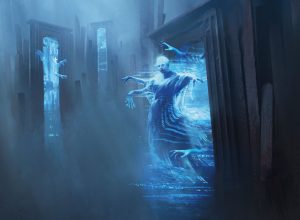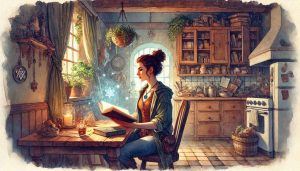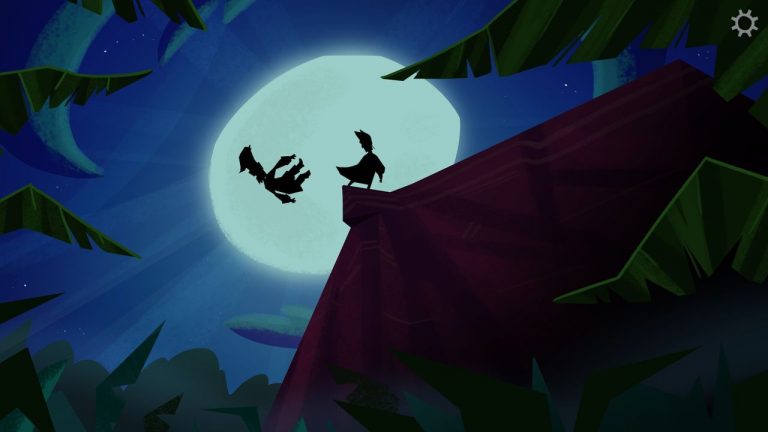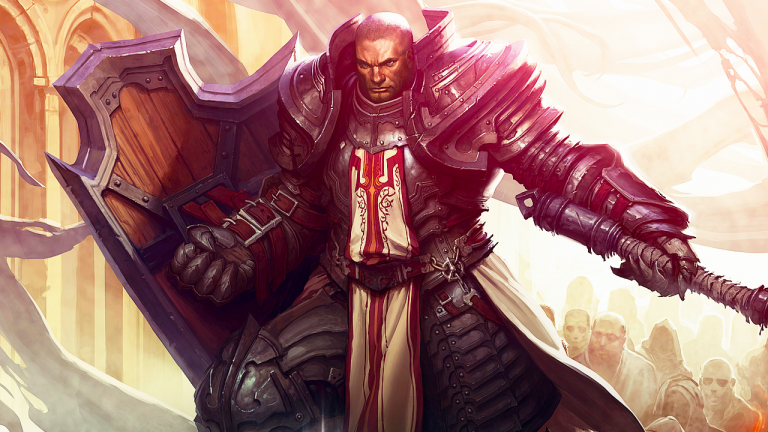Books that blend video game elements with traditional storytelling have taken the literary world by storm. LitRPG, short for Literary Role-Playing Game, has captured the hearts of readers who love both fantasy and gaming. This genre throws characters into game-like worlds, complete with stats, levels, and quests.
As LitRPG books have grown in popularity, the genre has branched out in exciting ways. Writers and fans have pushed its boundaries, creating a rich tapestry of subgenres. Each of these offshoots brings something unique to the table, catering to different tastes and interests within the broader LitRPG community.
In this deep dive, we’ll explore the key subgenres that have emerged from LitRPG. From the foundational GameLit to the martial arts-infused Wuxia LitRPG, we’ll uncover what makes each subgenre tick and why readers can’t get enough of them.
GameLit: The Foundation of LitRPG
GameLit serves as the bedrock of the entire LitRPG genre. It’s the broader category that encompasses stories where video game elements play a significant role, but don’t necessarily dominate the narrative. In GameLit, you’ll find tales that use game-like systems as a backdrop for the plot, rather than making them the main focus.
What sets GameLit apart is its flexibility. These stories might feature characters who are aware they’re in a game, or they might simply exist in a world that operates on game-like rules. The key is that the gaming elements enhance the story without overshadowing the characters or plot.
For example, “Ready Player One” by Ernest Cline is often cited as a GameLit classic. While it’s set in a virtual world and packed with gaming references, the story isn’t bogged down by detailed stat sheets or constant level-ups. Instead, it uses its game-like setting to explore themes of friendship, identity, and corporate power.
Another hallmark of GameLit is its accessibility. Readers don’t need to be hardcore gamers to enjoy these books. The stories often focus on universal themes and character development, with the game elements adding flavor and excitement to the mix.
If you’re new to the genre, GameLit offers a gentle introduction to the world of game-inspired fiction. It’s a great starting point for readers who love the idea of game worlds but don’t want to get lost in the nitty-gritty details of character sheets and skill trees.
Progression Fantasy: The Journey of Growth
Progression Fantasy has emerged as a popular subgenre that focuses intensely on character development and power scaling. These stories tap into our love for watching characters grow from weaklings to powerhouses, often through hard work, clever thinking, and sheer determination.
At its core, Progression Fantasy is all about the journey. Readers follow protagonists as they gain new abilities, overcome challenges, and steadily climb the ladder of power. Unlike some other subgenres, the progression in these stories tends to be more gradual and earned, rather than sudden or luck-based.
One of the defining features of Progression Fantasy is its emphasis on training and skill acquisition. Characters often spend significant time honing their abilities, whether through traditional martial arts, magical studies, or mastering unique power systems. This focus on personal growth resonates with readers who enjoy seeing the fruits of hard work and perseverance.
While Progression Fantasy shares some DNA with LitRPG, it doesn’t always include explicit game mechanics. Instead, it might use other systems to measure growth, such as cultivation levels in Xianxia-inspired works or magical ranks in more traditional fantasy settings.
A standout example of Progression Fantasy is “Cradle” by Will Wight. This series follows Wei Shi Lindon, a young man born without magic in a world where power is everything. Readers watch as Lindon struggles, learns, and slowly becomes a force to be reckoned with. The series exemplifies the subgenre’s appeal, combining satisfying character growth with an intricate magic system and epic scope.
For those who love seeing underdogs rise to the top or enjoy detailed magic systems, Progression Fantasy offers a treasure trove of satisfying reads. It’s a subgenre that celebrates the hero’s journey in its most literal sense, charting every step from novice to master.
Isekai LitRPG: Transported to Another World
Isekai, a term borrowed from Japanese, means “different world” or “otherworld.” In the context of LitRPG, Isekai refers to stories where characters are transported from their ordinary lives into game-like fantasy realms. This subgenre has exploded in popularity, fueled by its perfect blend of wish fulfillment and fish-out-of-water narratives.
The appeal of Isekai LitRPG lies in its ability to let readers experience the thrill of entering a new world alongside the protagonist. These stories often start with a bang – the main character might die in our world, get summoned by a magical ritual, or simply wake up in a strange new place. From there, they must learn to navigate unfamiliar rules, often with the benefit of game-like systems to guide them.
What sets Isekai LitRPG apart from other portal fantasies is its explicit use of gaming elements. Characters might see status screens, gain experience points, or learn skills as if they were in a role-playing game. This fusion of real-world perspective and fantasy game mechanics creates a unique narrative playground.
One popular example of Isekai LitRPG is “The Wandering Inn” by pirateaba. This web serial follows Erin Solstice, a young woman from our world who finds herself in a fantasy realm where people gain classes and levels. The story showcases the subgenre’s strength in world-building and character development, as Erin uses her Earth knowledge and newfound abilities to carve out a place for herself in this strange new world.
Isekai LitRPG taps into our desire for escapism and adventure. It allows readers to imagine themselves in the protagonist’s shoes, discovering magical abilities and conquering challenges in a world where the rules of reality no longer apply. This subgenre often explores themes of adaptation, growth, and the meaning of home, all while providing the excitement of leveling up and gaining new powers.
For readers who dream of being whisked away to fantastical realms, Isekai LitRPG offers the perfect blend of familiarity and wonder. It’s a subgenre that continues to evolve, pushing the boundaries of what’s possible when our world collides with the limitless potential of game-inspired fantasy.
Dark LitRPG: Venturing into the Shadows
Dark LitRPG takes the game-inspired elements we know and love and plunges them into shadowy depths. This subgenre isn’t afraid to explore the grittier, more challenging aspects of living in a game-like world. It often features mature themes, moral ambiguity, and situations where survival isn’t guaranteed.
In Dark LitRPG, the stakes are higher and the consequences more severe. Characters might face permadeath, where dying in the game means real-world consequences. The worlds these stories inhabit tend to be harsher, with systems that don’t always favor the protagonist. This creates a tension that keeps readers on the edge of their seats, never quite sure if their favorite characters will make it to the next chapter.
One of the defining features of Dark LitRPG is its willingness to subvert expectations. While traditional LitRPG might focus on heroic quests and clear-cut morality, Dark LitRPG delves into gray areas. Protagonists might be anti-heroes, forced to make difficult choices to survive. The line between good and evil often blurs, reflecting the complexities of real-world morality.
These stories often explore themes of power, corruption, and the impact of virtual realities on human psychology. They ask tough questions about what people might do when freed from real-world consequences or trapped in systems designed to exploit them.
“Awaken Online” by Travis Bagwell is a prime example of Dark LitRPG done right. The series follows Jason, a teenager who becomes a villain in a virtual reality game. It explores themes of bullying, revenge, and the blurred lines between in-game actions and real-world consequences. The dark tone and morally complex choices make for a gripping read that challenges readers’ expectations of the genre.
Another standout in the Dark LitRPG subgenre is “Everybody Loves Large Chests” by Neven Iliev. Despite its humorous title, this series delves into dark territory, following a monster protagonist in a world where survival often means ruthless actions. It pushes the boundaries of traditional narratives, offering a unique perspective on morality and growth in a game-like world.
For readers who crave more than just power fantasies, Dark LitRPG offers a refreshing change of pace. It combines the familiar elements of LitRPG with deeper, often unsettling themes, creating stories that linger in the mind long after the last page is turned.
Crafting LitRPG: The Art of Creation
Crafting LitRPG shifts the focus from combat and questing to the intricate art of creation within game-like worlds. This subgenre celebrates the joy of building, inventing, and mastering trades. It’s a haven for readers who find satisfaction in the details of resource management and the thrill of bringing new things into existence.
In Crafting LitRPG, protagonists often excel not through brute force or magical might, but through their ability to create and innovate. These stories might follow blacksmiths forging legendary weapons, alchemists brewing powerful potions, or architects designing entire cities. The ‘level up’ moments come not from defeating enemies, but from mastering new techniques or creating groundbreaking items.
What sets Crafting LitRPG apart is its focus on economy and trade within the game world. Authors in this subgenre often develop intricate systems of resource gathering, item crafting, and market dynamics. Readers get to dive deep into the nitty-gritty of production chains, rarity tiers, and the economics of fantasy worlds.
This subgenre appeals to readers who enjoy strategic thinking and problem-solving. Crafting LitRPG often presents challenges that can’t be overcome with a sword or a spell, but require clever use of available resources and skills. It’s a celebration of creativity within defined systems, much like the crafting mechanics in popular video games.
“The Crafter’s Dungeon” by Jonathan Brooks exemplifies the Crafting LitRPG subgenre. The story follows Sandra, who chooses the path of a crafting-based dungeon core. Instead of focusing on combat, Sandra must use her crafting skills to create traps, items, and even minions to defend her dungeon. The novel delves deep into the mechanics of crafting and dungeon management, offering a fresh take on the LitRPG formula.
Another notable entry in this subgenre is “Life Reset” by Shemer Kuznits. While not exclusively focused on crafting, this series features a protagonist who builds and manages an entire village of monsters. The detailed systems for resource management, construction, and economic development showcase the appeal of Crafting LitRPG.
For readers who find joy in creation and strategy, Crafting LitRPG offers a unique blend of fantasy and simulation. It’s a subgenre that rewards attention to detail and creative problem-solving, providing a different kind of satisfaction than combat-focused narratives.
Wuxia LitRPG: The Martial Hero’s Journey
Wuxia LitRPG represents a fascinating fusion of Eastern and Western storytelling traditions. Wuxia, which literally means “martial heroes” in Chinese, is a genre of Chinese fiction that focuses on the adventures of martial artists in ancient China. When combined with LitRPG elements, it creates a unique subgenre that blends the philosophical and cultural aspects of Wuxia with the systematic progression of role-playing games.
In Wuxia LitRPG, you’ll find stories steeped in the concepts of honor, righteousness, and personal cultivation. Protagonists often start as underdogs, gradually honing their skills and increasing their power through dedicated training and enlightenment. The ‘game’ elements in these stories might manifest as cultivation levels, internal energy measurements, or martial arts techniques that can be learned and upgraded.
What sets Wuxia LitRPG apart is its strong emphasis on martial arts philosophy and Chinese cultural elements. Characters don’t just gain raw power; they seek to understand the Dao (the Way) and achieve harmony with the world around them. This spiritual aspect adds depth to the progression systems typical of LitRPG.
The worlds in Wuxia LitRPG are often inspired by ancient China, featuring martial arts sects, immortal cultivators, and mythical beasts. However, these elements are quantified and systematized in a way that appeals to fans of role-playing games. You might see characters discussing their cultivation base in terms of levels or measuring their Qi (internal energy) with numerical values.
“The Dragon Heart Heritage” series by Kirill Klevanski is a prime example of Wuxia LitRPG done well. It follows the journey of Hadjar as he cultivates his martial arts in a world inspired by both Eastern and Western fantasy traditions. The series beautifully balances the philosophical aspects of cultivation with the satisfaction of seeing numerical progression.
Another notable work in this subgenre is “Painting the Mists” by Patrick Laplante. This series incorporates traditional Wuxia and Xianxia elements into a LitRPG framework, creating a rich world where martial arts, magic, and personal cultivation intertwine with game-like systems.
For readers who appreciate the grace and philosophy of martial arts stories alongside the clear progression of RPGs, Wuxia LitRPG offers a captivating blend. It’s a subgenre that not only entertains but also introduces readers to aspects of Chinese culture and philosophy, all within the familiar framework of level-ups and skill trees.
Dungeon Core: Building from the Bottom Up
Dungeon Core stands out as one of the most unique and intriguing subgenres in the LitRPG world. It flips the traditional narrative on its head by casting the protagonist not as an adventurer, but as the dungeon itself. This fresh perspective offers readers a chance to explore fantasy worlds from an entirely new angle, blending elements of strategy, management, and creativity.
In Dungeon Core stories, the main character typically starts as a simple core – the heart of a dungeon. From this humble beginning, they must grow, expand, and defend themselves against adventurers and other threats. The ‘game’ elements come into play as the dungeon core gains experience, unlocks new rooms or traps, and develops its own ecosystem of monsters and treasures.
What makes Dungeon Core particularly fascinating is its focus on strategy and resource management. The protagonist must carefully balance their growth, considering factors like mana consumption, the strength of invading adventurers, and the overall ecosystem of their dungeon. It’s a subgenre that appeals to readers who enjoy puzzles, strategic thinking, and watching complex systems evolve over time.
These stories often explore themes of growth, adaptation, and the nature of consciousness. Many Dungeon Core protagonists start with limited awareness and gradually develop personalities as they interact with the world around them. This journey of self-discovery adds an extra layer of depth to the narrative, beyond just the mechanics of dungeon building.
“Divine Dungeon” by Dakota Krout is a standout example of the Dungeon Core subgenre. The series follows Cal, a sentient dungeon core, as he grows from a simple cave into a complex, living dungeon. Krout’s work showcases the potential of the subgenre, blending humor, strategy, and character development in a unique package.
Another notable entry is “Dungeon Born” by Jonathan Brooks, which explores the symbiotic relationship between a dungeon core and the adventurers who delve into its depths. The novel delves into the mechanics of dungeon growth while also examining the impact of the dungeon on the surrounding world.
For readers tired of the usual hero’s journey, Dungeon Core offers a refreshing change of pace. It’s a subgenre that rewards creativity and strategic thinking, allowing readers to experience the thrill of building and managing their own fantasy realm.
The Ever-Expanding World of LitRPG Books
As we’ve journeyed through the diverse landscape of LitRPG subgenres, it’s clear that this young genre has already spawned a rich and varied ecosystem of stories. From the foundational GameLit to the strategic depths of Dungeon Core, each subgenre offers a unique twist on the fusion of gaming and storytelling.
The beauty of LitRPG lies in its flexibility. It provides a framework that can adapt to almost any style of story or setting. Want a gritty tale of survival? Dark LitRPG has you covered. Prefer to build and create? Crafting LitRPG awaits. Drawn to Eastern philosophy and martial arts? Wuxia LitRPG beckons.
This diversity ensures that there’s something for every reader within the LitRPG umbrella. Whether you’re a hardcore gamer looking for stories that reflect your passion, or a casual reader intrigued by the idea of game-like progression in storytelling, you’ll find a subgenre that speaks to you.
As LitRPG continues to grow and evolve, we’re likely to see even more subgenres emerge. Authors are constantly pushing the boundaries, finding new ways to incorporate game elements into their narratives and exploring unconventional perspectives.
For readers, this means a constant stream of fresh, exciting content. Each new book has the potential to introduce a novel take on the genre, blending familiar elements in unexpected ways. It’s an exciting time to be a LitRPG fan, with the promise of countless adventures waiting to be discovered.
So, whether you’re new to LitRPG or a seasoned veteran, take some time to explore these subgenres. You might find your next favorite read in an unexpected corner of this vibrant literary landscape. Happy reading, and may your stats always increase!
The post Exploring the Subgenres of LitRPG Books: From GameLit to Wuxia and Beyond appeared first on LitRPG Reads.












